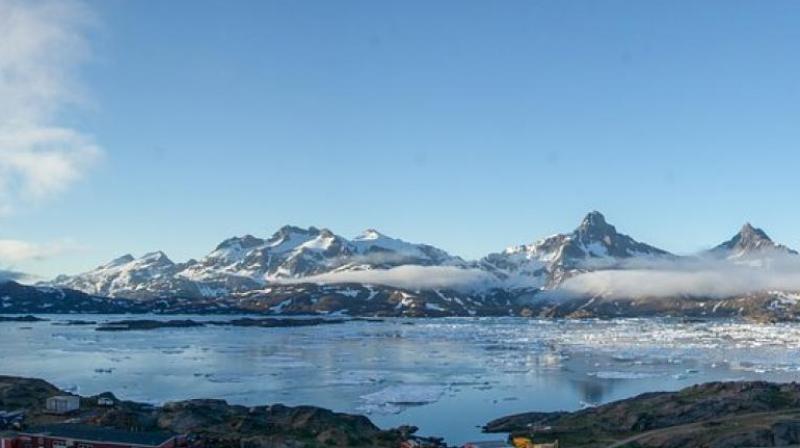So, let's talk green: Zombies in the ice
Greenland, to fill its budget gaps is planning to explore opening six new mines across the country.

“Sharpen your skills, or it breaks your will, At the foot of the great glacier. Abominable beasts who seek to feast, At the foot of the great glacier.” Lyrics for the song, At the foot of the great glacier.
At the foot of the glacier was written by a group called 3 Inches of Blood, a Canadian heavy metal band formed in 1999 in Victoria, British Columbia. Heavy metal music is not my kind of music, as it is heavy with dark thoughts, dark movements and everything dark. Strangely they highlighted in their song, the presence of abominable beasts hiding in the glaciers. This dark thought is now proving to be true! Scientist couple, Jean-Michel Claverie and Chantal Abergel, who are professors of microbiology at Aix-Marseilles University, have unearthed the ‘abominable beasts….zombies’ that reside in the frozen ice of Arctic and Antarctic cricles. Since the turn of the century, these two scientists have established themselves as two of the world’s most famous microbe hunters.
Where is this horror story going you ask…. At the top of the world, there is water, which we call the polar ice cap. Now, after 35,000 years of frigid cold, we call them permafrost. Despite their name, they are not permanently, or entirely, frozen. Every winter, a sheet of ice blossoms over the Arctic sea, and the soils seize shut with frost. Then, during the long summer days, the ice breaks up and the permafrost partially thaws. The newly active permafrost is packed with old stuff: dead plants, dead animals, mosses buried and reburied by dust and snow. This matter, long protected from decomposition by the cold, is finally rotting, and releasing gases like methane into the atmosphere which is a deadly green house gas, which will quicken the rate of global warming. This matter is also full of bacteria and viruses long immobilized by the frost. Climate change could awaken Earth’s forgotten pathogens. It is one of the most bizarre symptoms of global warming. And it has already begun to happen.
In 2002, Claverie and Chantal, while researching Legionnaires’ disease in their lab in Marseilles, discovered the largest virus ever: Mimivirus, a virion so large that it could be seen under a microscope. Since then, they have identified four more monster viruses, all several times larger than any known to science before 2000. All of these mammoth viruses infect amoebae, not people. They do not pose an infective risk to us. But they are strange substances. “We tried to isolate amoeba viruses without knowing they were going to be giant viruses-and a totally different type of virus than we already know appeared,” Claverie said. “It turns out the viruses we are getting in the permafrostare extremely abnormal, extremely fancy.”
Claverie and Abergel’s viruses aren’t a threat to humanity-yet. But human pathogens have also survived freezing and thawing in the permafrost. Last summer, an outbreak of anthrax in Siberia infected dozens of people and killed one child. The vector of disease is thought to be the thawing and decaying carcass of a reindeer killed in 1941. A team of Canadian scientists recently found a strain of bacteria, Paenibacillus, in a cave in New Mexico that had been closed off for more than 4 million years. Though harmless to humans, the ancient bacteria was resistant to most clinical antibiotics, including most of the newest and most aggressive. The discovery suggested that bacteria can survive the most exotic and remote environments.
Greenland, to fill its budget gaps is planning to explore opening six new mines across the country. Greenland abounds in minerals-very precious metals, rare-earths, petrol, gas and gold. Getting to these minerals will require moving millions of tons of permafrost. Towering heaps of rotting permafrost stacked up next to mining cabins, their contents open to the sun and air and summer rain is invitation for trouble. Some of the microbes lurking in the permafrost may be familiar to science. More worrisome are the microbes we don’t know. “No one really understands why Neanderthals went extinct,” Claverie said.
Are there possible permafrost-locked zombies that have threatened humans or human relatives in the past? Zombies in the ice are scary, so leave them there!

